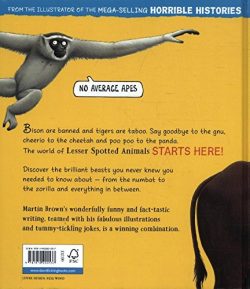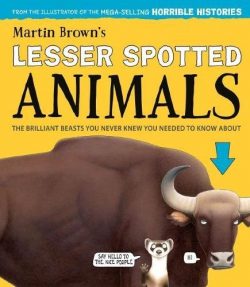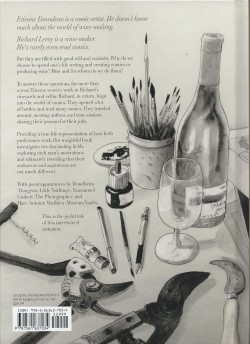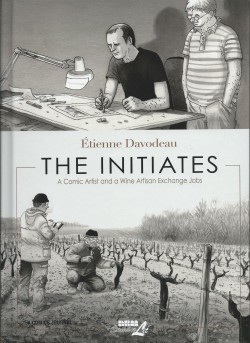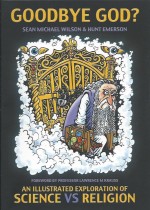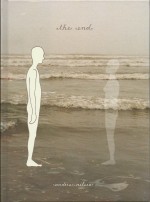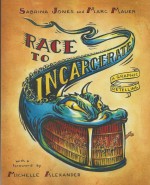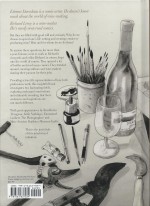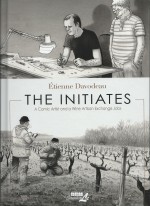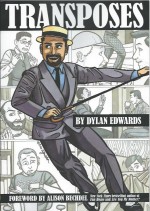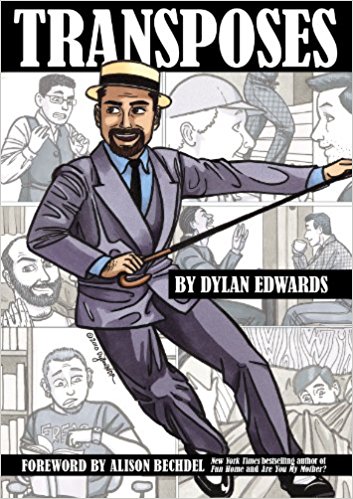
By Dylan Edwards (Northwest Press)
ISBN: 978-0-9845940-8-5
I don’t hold many unflinching beliefs; but one of the few is that I, you and certainly no church, government or pressure group has any damn right to dictate what consenting adults do with or to their bodies. And yes, that includes parents, families and partners. Discuss, debate, disagree but never, ever demand…
I may reserve the right to privately snigger at some of the more ambitious or physically-ill-judged things consenting adult people get up to in order to get their rocks off, but I can’t help that: after all I’ve lived through Flower Power, Free Love, New Men, flared jeans (twice!) and an era when both religions and politicians tolerated gays and evolution, and believed women were (in principle, at least) equal to men.
I’m more than happy for anybody to assert, clarify or reassign their gender identity or lack thereof as they see fit, and as for when “Life begins†and what you’re born as, I’m far more concerned by the fact that the most vocal advocates “know†exactly when, what and how it begins whilst it’s inside a human yet feel no compunction or duty of care or wellbeing for any baby – or mother – as soon as the (still developing until age 30 years or more) agglomeration of cells is out of the womb and into the world…
Whilst we’re sharing, I also feel we should probably all pass an exam before we’re allowed to vote or voice an opinion; and require every person seeking office to endure weekly sobriety tests, financial background checks and regular psychiatric evaluations, but maybe that’s just me…
There are a lot of acronyms in today’s book and I’m not going to play translator or decoder interminably, so if we miss linking any just use that search engine OK? This is comics, not University Challenge…
LGBT comics have long been the best place in the graphic narrative business to portray real romance: an artefact, I suppose, of a society that seems determined to simultaneously establish sex and love as two utterly separate beasts and exactly the same thing.
I’d still love to think that in the 21st century we’ve all outgrown the juvenile, judgemental bad old days and can simply appreciate powerful, moving and funny comics about people of all sorts without any kind of preconception…
Unless we’re talking girl/vampire/werewolf menageries à trois: that stuff is just plain wrong…
The very fact of being adjudged “different†now seems to be an increasingly common badge of courage in a world where fanatics and bigots become daily more rabid, and actual religious leaders can claim with straight faces that God so hates homosexuals and fornicators (or atheists or scientists or ginger-haired, left-handed people or…) that in His wisdom He sends fires and floods or tornados and tsunamis every year to wreck the homes of the faithful and worshipful – presumably because they ain’t doin’ nothin’ ’bout it…
Dylan Edwards, AKA NDR, is a graphic artist, cartoonist and sculptor: author of Politically InQueerect, sports strip The Outfield and many others, plus the creator of really cute monsters – as seen on his Feeping Creatures site. In Transposes he masterfully employs comics to celebrate the history of seven ordinary souls just living their lives as FTMs (Females Transitioning to Males).
Dylan – who extensively interviewed each star before crafting these elucidating mini-epics – encapsulates their unconventional existences for the wider world with disarming candour and certified charm. Of course, all the “hot button issues†touted by a hypocritically moralising media (coming out, bullying, role models, gay identity, promiscuity vs. monogamy, childhood sexual abuse, risky sex and/or partners, STIs, parental approval and rejection) are present here – which only goes to show just how widespread and universal these perennial difficulties are…
Regardless of that, this collection comes off as a wonderfully positive and affirming chronicle celebrating determination and difference and, after an effusive and informative Introduction by Alison Bechdel (cartoonist, author of Fun Home and Are You My Mother? and inadvertent deviser of the truly transformative Bechdel Test), there’s an engaging comic strip Foreword by storymaker Dylan Edwards explaining the process that led to the impressive pictorial reportage that follows.
Delivered with jokey aplomb, this savvy and smart ice-breaker gently eases the uninitiated into issues of transgender, cisgender and that subset-within-a-subset defined here as “queer-identified female-to-male-transpersons†before the terrific tale-spinning begins…
Over coffee ‘Cal’ tells of his trip to physically hook-up with an adventurously like-minded internet contact and how it all led to a few surprises, a whole new set of skills and a great story to dine off for months to come…
The gloriously hilarious ‘Henry’ scrupulously – perhaps even compulsively – recorded every aspect of his satisfyingly unconventional life and was quite content to share insights and horror stories from the astounding Museum of Natural Henry…
Confusion and insecurity were a way of life for ‘Adam’ until he met Marni, who, after an intense and nurturing time, helped her beau discover that she really wasn’t the girl for him, whilst for ‘Blake’ an intoxicating brief encounter led to unexpected and life-long repercussions.
Scholarly, happily-in-control ‘Avery’ learned his greatest lessons early from an intolerant father and the wise, understanding and joyously gay uncle the family had ostracised, after which the cavalcade of human drama ends with a gloriously moving, entwined tale of two young outsiders simply destined for each other in the parallel-lives journey of ‘Aaron & James’; ending our odyssey on a fabulous, happy high note…
We are then comfortingly caught-up by a brief Epilogue in which all the participants are revisited and updated on life since their interviews to re-emphasise that feeling of pleasing continuance…
Comics as a medium is already a symbolically intensive one; honed and irresistibly one-step-removed from the mundane faux reality of film or photography. As such its powers to skin away confusing or misleading surface and reveal unalloyed intent and meaning are without parallel.
Don’t take my word for it. Check out any political caricature by Hogarth, Scarfe or Steve Bell…
It’s an admission of annoying embarrassment to me that I’ve felt compelled to put in so much equivocating background and bumph before coming to the meat of this review. In the final analysis Transposes is a subtly sensitive, evocative, romantic and humorously rewarding collection of “people stories†which any open-minded fan will adore.
There’s not much fighting, but plenty of punch, and in an ideal world, this book would be readily available in every school library for any confused kid in need of inspiration, comfort, understanding, encouragement and hope.
Sadly, because it deals openly and frankly with sex and gender, it’s probably banned in more than half of the United States and still pilloried in our free and impartial Press…
Well, if nothing else this meagre, reminding poke will garner some publicity and be useful in ensuring that folk who need to can still find it…
© 2012 Dylan Edwards. All rights reserved.
